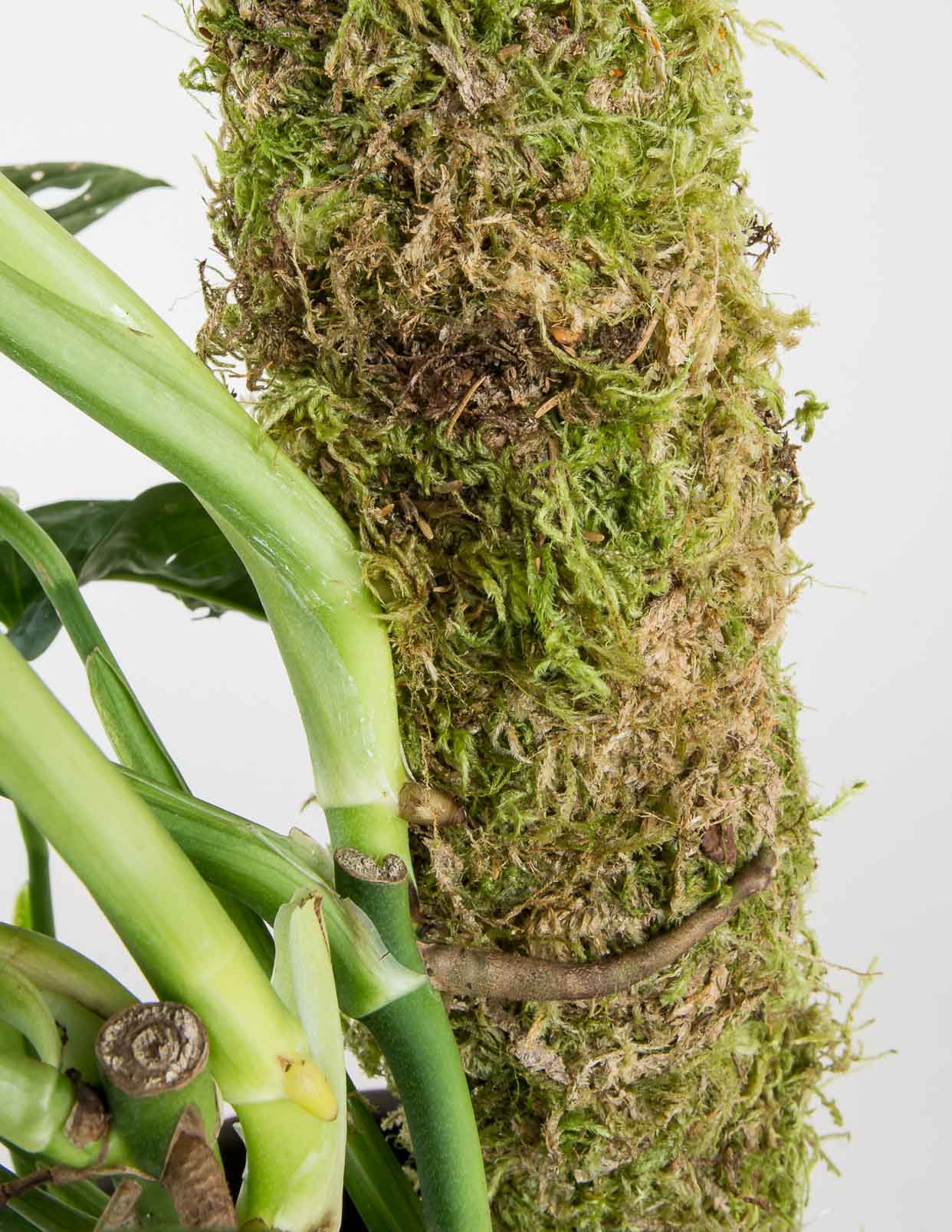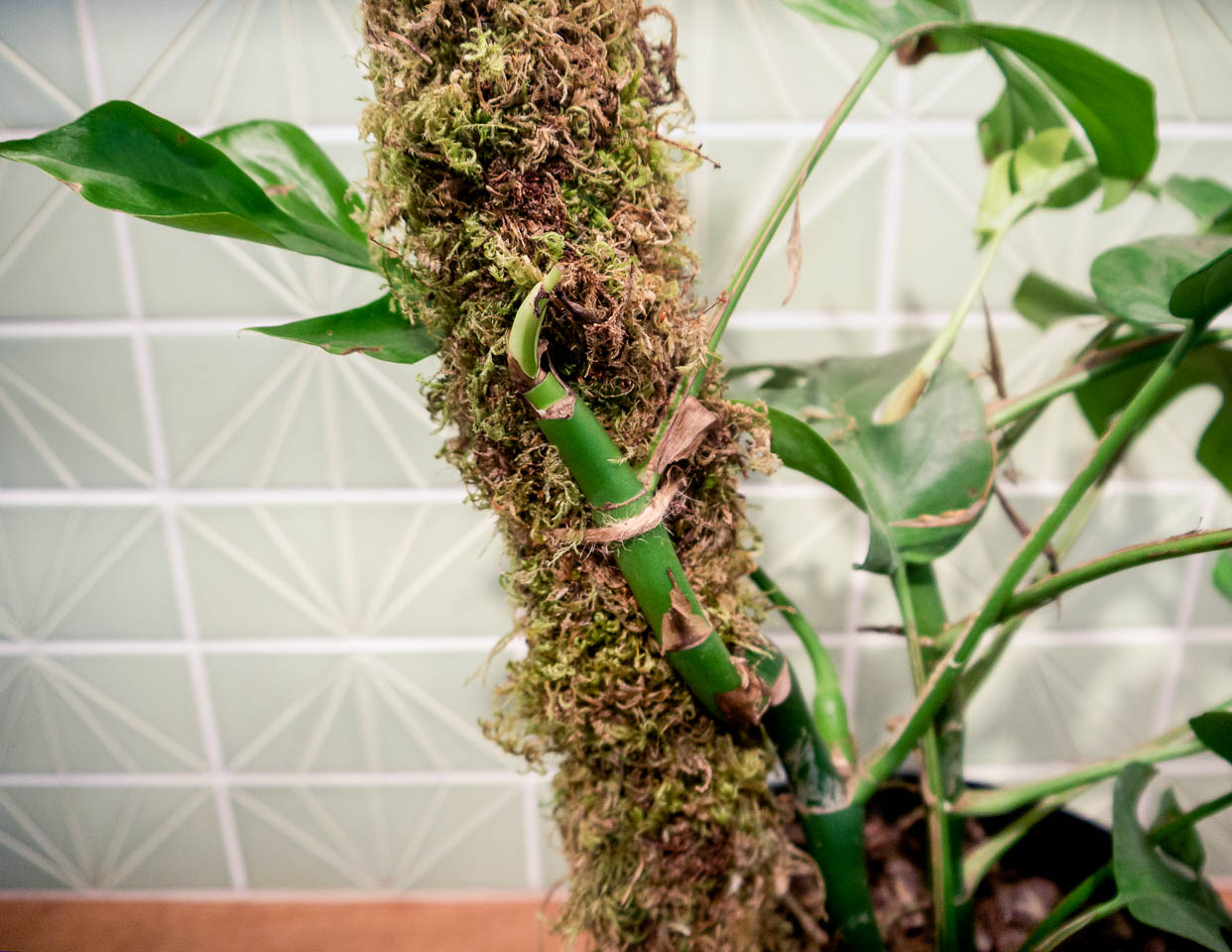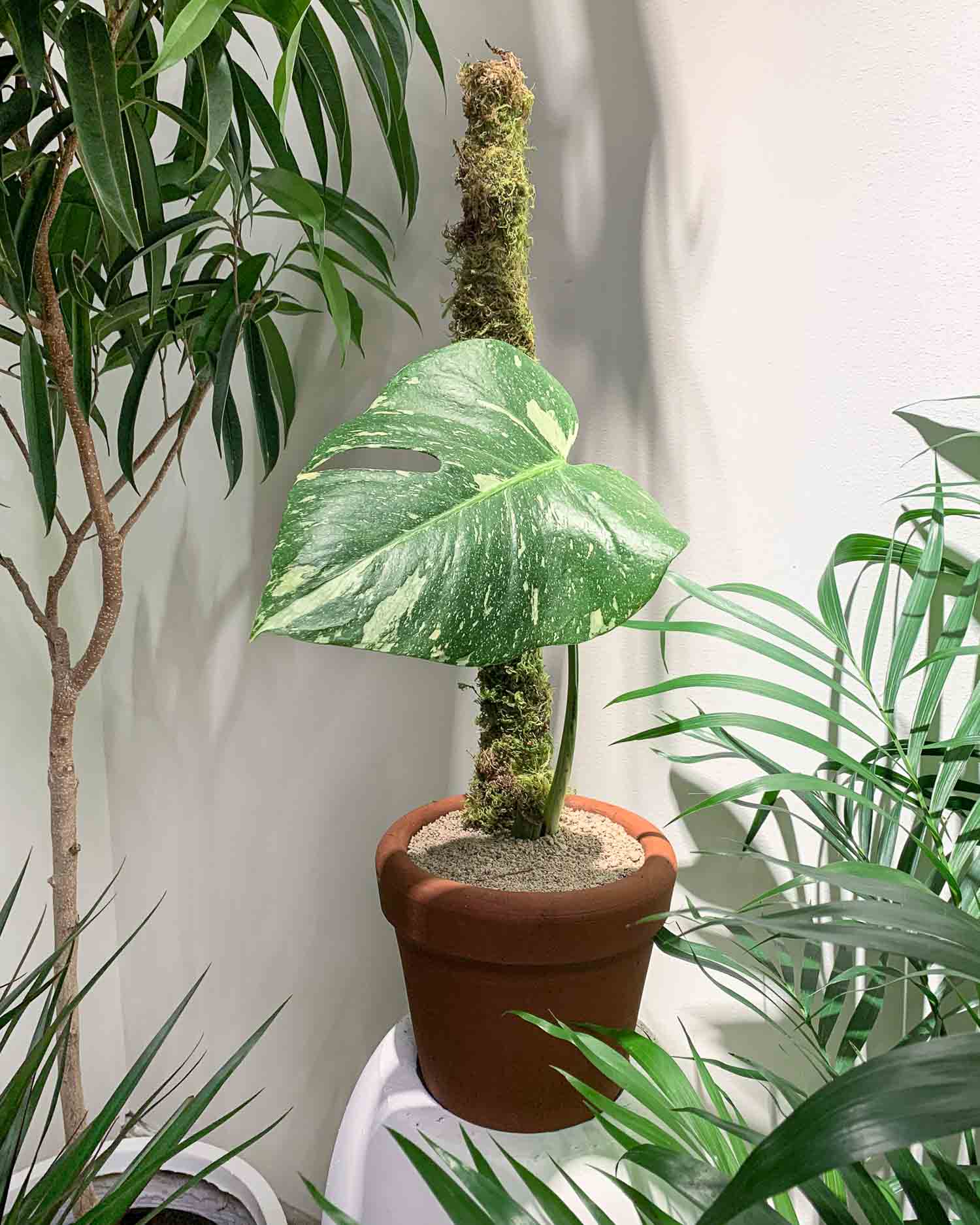You have a trailing tropical or some epic epiphytes and you've hit your stride as a plant owner. Your houseplants are thriving – perhaps they're even starting to take over. Now that they're growing wild and flopping all around, what's next in the progression of plant care? Support your plants with a moss pole, stake or trellis!
We all need someone to lean on from time to time, and your plants are no different. Moss poles support the growth of your plants, train their growth habit, and, for those vines with adventitious roots, provide extra micronutrients to your plants. Plus, for some plants including many aroids, the contact between aerial roots and the moss pole can trigger the development of larger, more mature leaves.

How Moss Poles Help Plants Grow
An epiphyte is a type of plant that grows on the surface of another plant (often a tree), and derives its moisture and nutrients from the air, rain, water, or debris accumulating around it. Many of these plants are vines that grow up the branches of trees into the jungle canopy. The function of a moss pole is to mimic a plant's natural growing environment by creating a surface that is easy for the plant to affix to, and by providing a medium that contains micronutrients.
Moss poles allow for root attachment which strengthens the plant (and makes for a more attractive growth habit). As the moss is absorptive, keeping your moss pole moist will allow long vines another source of water when they're fully attached to the support.
 The aerial roots on Monstera adansonii will quickly grow into a moist moss pole
The aerial roots on Monstera adansonii will quickly grow into a moist moss pole
Many people ask us how they can encourage their Monstera and other aroid plant species to grow larger leaves and get those beloved fenestrations (the natural splits and windows that occur in Monstera deliciosa and Monstera adansonii at maturity). In their natural habitat, climbing aroids like Monstera grow up large tree trunks in the jungle. As their adventitious roots are able to bind to the tree as it climbs, the plant becomes sturdier and able to support more weight, and as it gets ever closer to the jungle canopy it receives more light which encourages larger leaves to form.
Moss poles imitate this growth habit, and so long as your plant makes contact with the moist moss pole at each node, large leaves will start to develop once the plant attaches to the support with its adventitious roots.
How to Use a Moss Pole
- Gauge how tall you need your moss pole to be. The moss pole should be taller than your plant's tallest vine in order to give it plenty of space to climb
- Once you've made or purchased your moss pole, start by soaking it in water until fully saturated. The moisture will help your plant to bind to the pole
- Insert the wood end into the soil, positioning so that the moss pole is as close to the center of the pot and base of the plant as possible. Take extra care not to damage the main root system of your plants when positioning the moss pole!
- Start wrapping the plant's vines around the pole. Securing with twine as you work your way around the pole. Pay extra attention to each node of the plant (where the leaves meet the stem) as this is where adventitious roots will form; try to make sure that each node makes good contact with the moss pole.
- Voila! Watch you plants grow
 Using twine to make sure the nodes on Raphidophora tetrasperma make contact with the support
Using twine to make sure the nodes on Raphidophora tetrasperma make contact with the support
Moss Pole Maintenance Tips
- It is helpful to spritz your moss pole often or to pour water down the pole when watering to ensure your plants adventitious roots receive water. Most aroids will appreciate the extra humidity!
- As your plant binds to the moss pole, you can remove the twine. Continue adding up the pole to continue training your plants growth
- When your plant has outgrown your moss pole you may extend it by binding a new one to the old one and repeating the process, or you can allow your plant to vine back down the moss pole to fill out growth.
- When your plant has outgrown its pot, replant it with the same moss pole in the new container
- Be very careful if ever removing a moss pole, as damaging the adventitious roots could cause issues with the plant's health
Where to Get a Moss Pole
Moss poles are still a bit of a specialty item in plant care, but more and more nurseries are starting to carry them! We have moss poles in 2' and 3' lengths in our shops.
If you want to try making your own moss pole, we recommend using a sturdy bamboo or other rot resistant stake, and plenty of sphagnum moss.
Alternatives to Moss Poles
Supporting your plants is certainly not limited to moss poles! For example, you can train a vining plant to climb up a wall with push pins or nails. A large piece of wood for bigger plants can make a helpful support and hold the plant upright if it needs a bit more strength but isn't a climber.
Bamboo stakes and ladders make great supports for thinner lighter vines such as Hoyas, which have creeping vines that naturally wrap around supports like these as they grow. For smaller anthuriums that are in need of some training, a small metal rod can help support it and keep its growth upright.
 Monstera deliciosa 'Thai Constellation' will produce larger foliage now that it has a moss pole to climb
Monstera deliciosa 'Thai Constellation' will produce larger foliage now that it has a moss pole to climb
We hope that by giving your plants a little support, you are able to help them flourish for years to come!
By: Amelia Ralston-Okabayashi

Comments
Enjoyed this, like all your others.